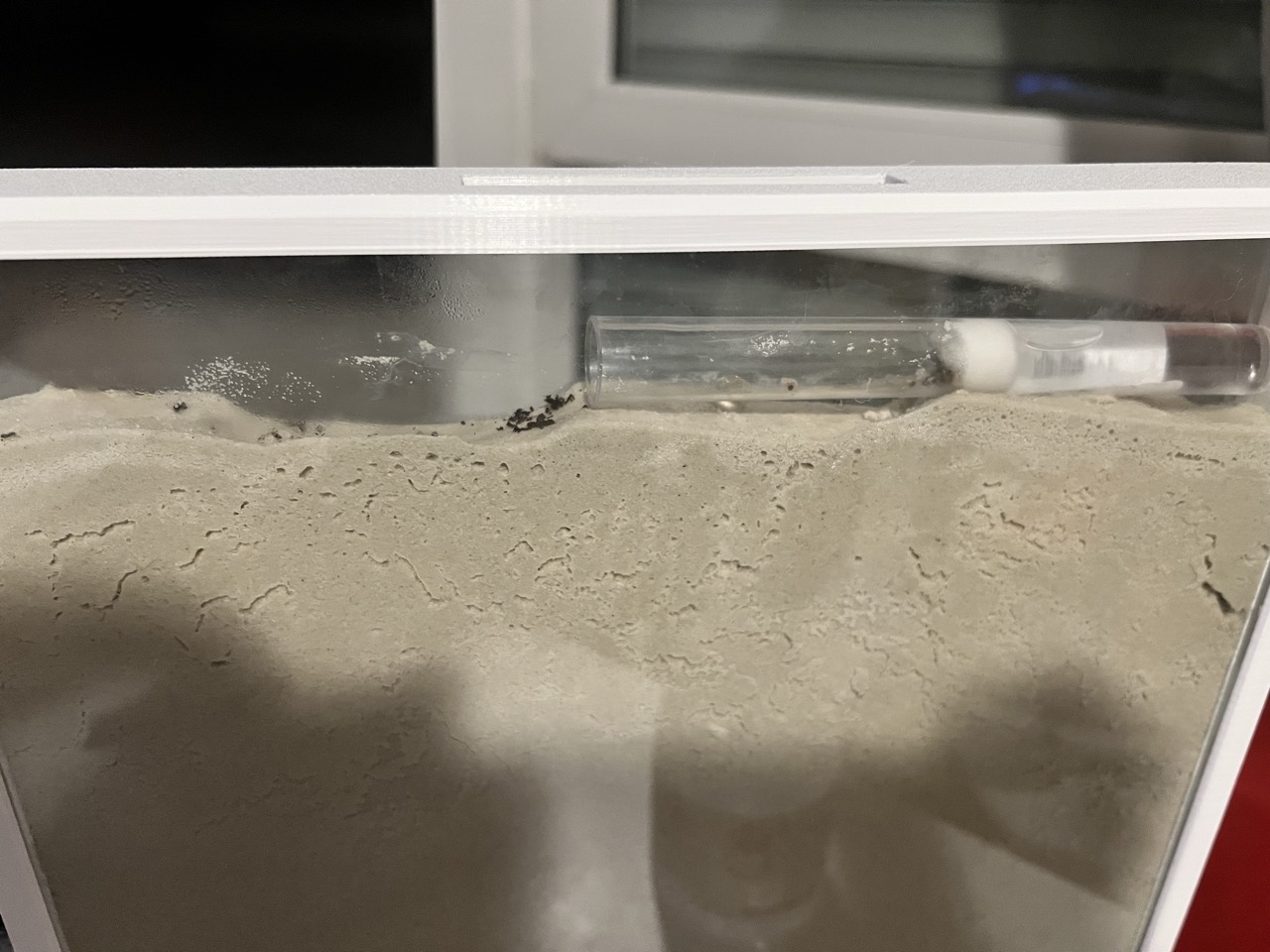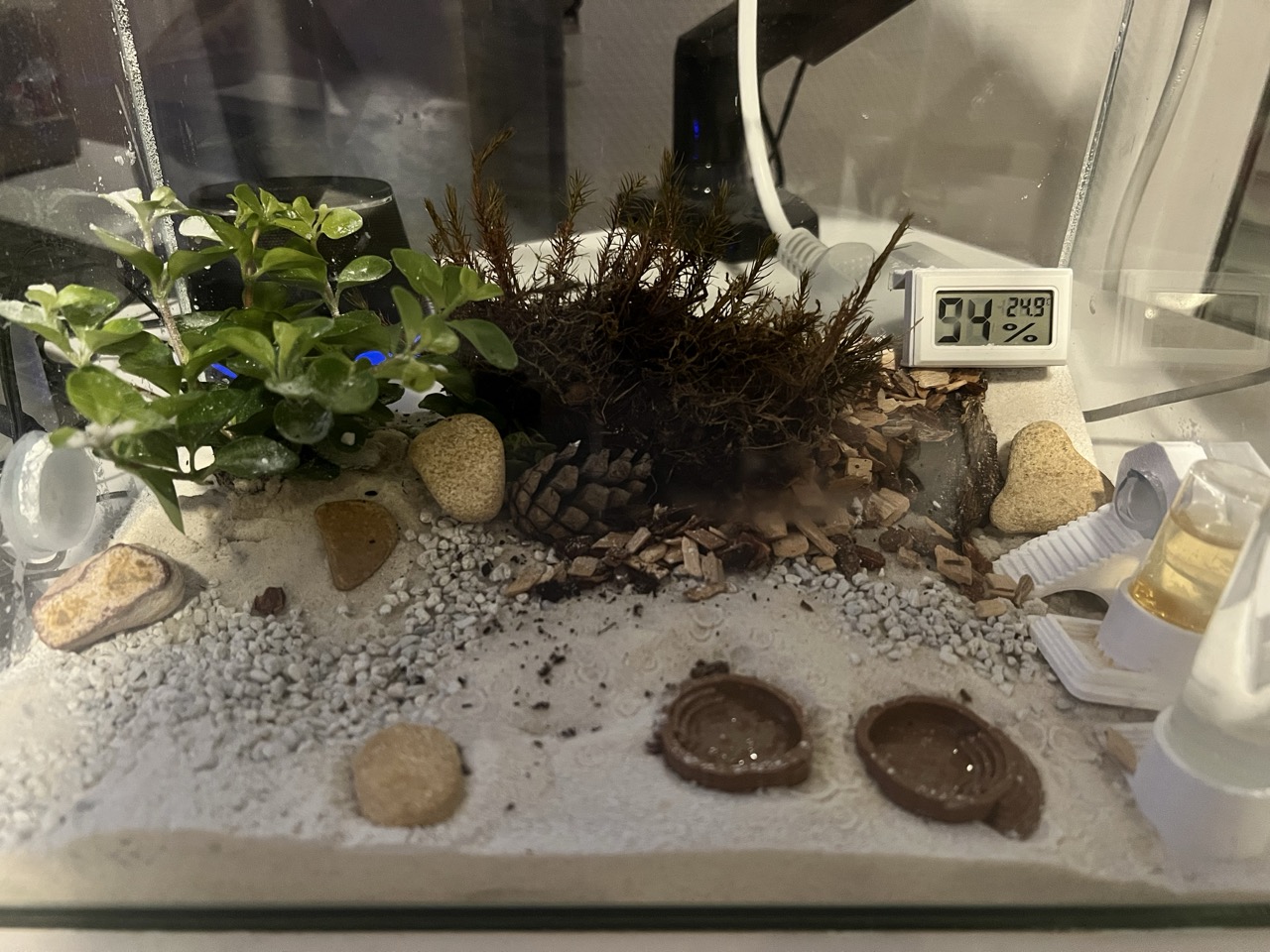Welcome to Valenta
After weeks of planning, collecting supplies, and imagining how it would all come together, the moment finally arrived: my first ant colony has moved in. The setup—now named Valenta—includes a sand-loam nest, a still-sealed arena, and some carefully chosen natural decorations to make it feel like a real microhabitat.
The colony itself is called Castra Solis, Latin for "Camp of the Sun." A fitting name for a humble beginning in sandy terrain.
The Species: Lasius niger
Lasius niger, also known as the black garden ant, is one of the most common and beginner-friendly species in Europe. They’re hardy, adaptable, and known for their impressive colony growth once they get going.
Starting small is part of the journey—Lasius niger queens often raise their first generation of workers alone, and the colony builds from there. Over time, they can number in the thousands, but right now, it’s all about small steps.
Arrival and Introduction
The colony arrived healthy in a test tube setup, consisting of a queen and eight workers. Rather than forcing them into a new space right away, I gently placed the test tube directly into the nest. This allows them to explore at their own pace, with no pressure to relocate before they’re ready.

The nest is composed of compact sand and loam—perfect for tunneling once they decide to dig. Within the first few minutes, 2–4 workers began exploring regularly while the rest stayed near the queen.
I offered a small drop of brown sugar water, which they eagerly consumed. They filled up quickly and have mostly ignored later servings since then. A good sign they’re well-fed and content.
Ant Engineering at Work
By the next morning, they’d already shown off some problem-solving. The ants began gathering bits of substrate and building a small ramp of dirt at the edge of the test tube. It made it easier to get in and out—especially important given the tube's entrance was slightly elevated.
One ant even dug a narrow tunnel at the corner of the nest. It's nothing major yet, just early exploration, but it’s a sign that they’re getting comfortable.
Setting the Arena Stage
While the colony remains in the nest for now, the arena has already been prepared. It features two Peperomia plants, some moss, bark, and decorative stones—all chosen to be safe and visually natural. The arena also houses a small population of springtails, which I added in advance to help establish a microfauna community.

Springtails are mold-eating soil cleaners, and they’ve started settling in well. I’ve kept their numbers modest for now, letting them multiply in a separate container of moist dirt before introducing more. So far, the ants have observed the springtails curiously but peacefully. Only some intense sniffing.
Lighting and Conditions
Initially, I thought I’d need to cover the nest with a cloth to block light and maintain humidity. But instead, I’ve simply kept the room dark. It’s more comfortable for both me and the ants—especially since direct sunlight heats up the room too much anyway.
Humidity is still quite high, but in case of mold, the springtails will help keep things clean.
A Peaceful Start
Right now, Castra Solis is quiet, clean, and calm. No waste, no mold, no drama. The queen is tended by her founding workers, while a few scouts continue to map out the nest.
Soon, the colony will grow. One day they’ll venture into the arena and truly begin to expand their domain. But for now, they’re just getting started, and that’s more than enough.
Castra Solis has been founded. The warm sands of Valenta wait patiently for them to rise.
Stay tuned.